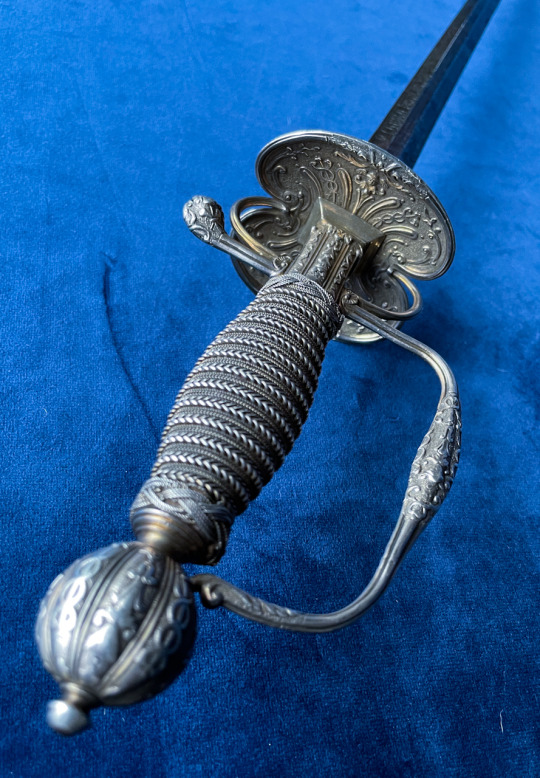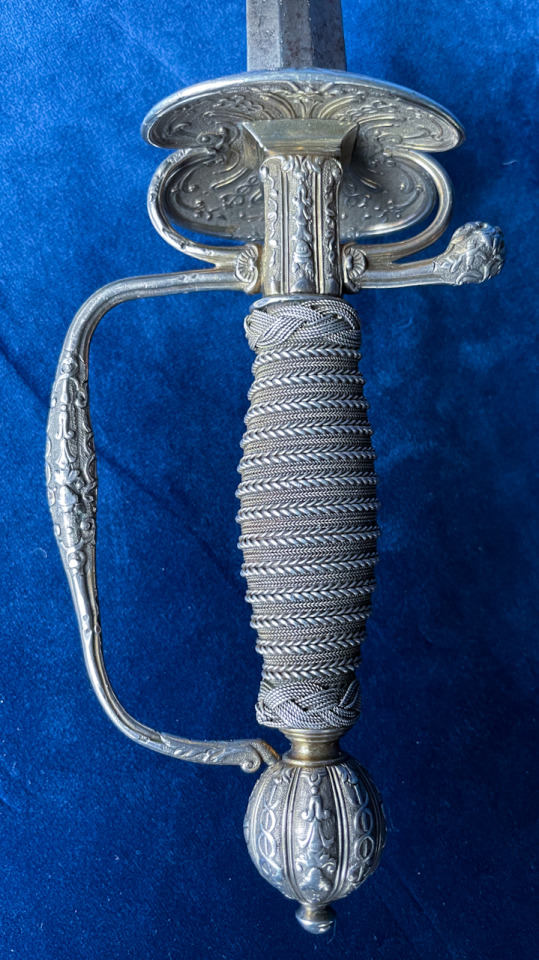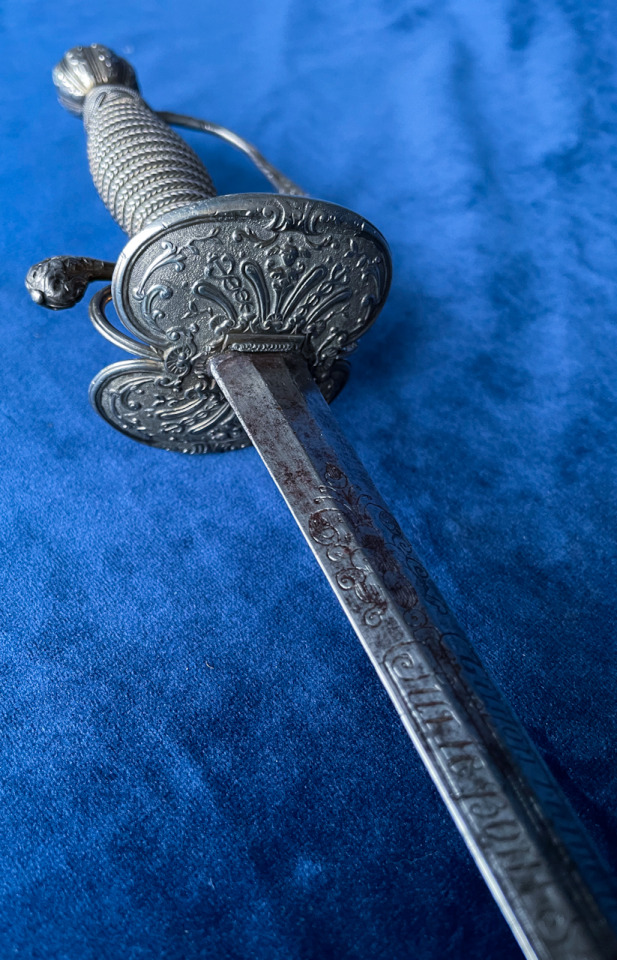#boatshell
Explore tagged Tumblr posts
Text


Playing with different backgrounds for displaying swords on. The blue is quite a cold colour, especially with all the bare steel. And at times the bluing also gets lost. I think the burgundy works well, so I will probably use that for the coming display. The top two swords are Georgian era non-regulation infantry officers swords. While the bottom two are 1796 Pattern swords, the one with the boatshell guard is for General Officers or Dragoon Officers dismounted service while the one with the Pas d’Ane guard is for infantry officers


#swords#British Army#Spadroons#Red vs Blue#antiques#displaying antiques#1796 Pattern Sword#five ball spadroon
117 notes
·
View notes
Photo

Slipper shells are my favorite to find at the beach. I love the surprise of the little shelf when you turn it over. Link in bio 👆🏻#tidepool #madeinny #seashelljewelry #slippershell #boatshell #barnaclebezel #bluetopaz #sterling #shellnecklace #beachcombers #handmadejewelry #etsyjewelry #summervibes #🐚 #Crepidulafornicata #mermaidjewels #atlanticocean #mainebeaches
#summervibes#shellnecklace#boatshell#barnaclebezel#handmadejewelry#🐚#crepidulafornicata#atlanticocean#seashelljewelry#bluetopaz#sterling#etsyjewelry#mermaidjewels#mainebeaches#tidepool#madeinny#beachcombers#slippershell
1 note
·
View note
Photo


Two smallswords, left is most likely Northern European, with a boatshell hilt of gilt bronze. The second is French with a silver hilt.
306 notes
·
View notes
Photo

AirFlashMLS.com https://bit.ly/2MFPqjw Sell your Yacht or Boats Here! You can also List them for Charter as well in our Rental Section Free Classified ADS Regular ADS Auction ADS Also Buy Now Ads with Paypal Available FACEBOOK Login • • • • • #BOATS #boatsonics #boatstuff #boatside #boatsandbirds #boatstand #boatsandbikinis #boats #boatsandbros #boatsonland #boatsearch #boatsafari #boatshedcafe #BoatShowPhotos #boatskeleton #boatshed #boatstar #boatshopping #boatshirts #boatshoot #boatsweekly #boatselfie #boatsforsale #BoatsAndDrones #boatshoe #Boatsmart #boatshell #boatshowmiami #boatsatsea #boatschooling (at West Marine) https://www.instagram.com/p/B1d4of6Adoe/?igshid=e2d2daokakuf
#boats#boatsonics#boatstuff#boatside#boatsandbirds#boatstand#boatsandbikinis#boatsandbros#boatsonland#boatsearch#boatsafari#boatshedcafe#boatshowphotos#boatskeleton#boatshed#boatstar#boatshopping#boatshirts#boatshoot#boatsweekly#boatselfie#boatsforsale#boatsanddrones#boatshoe#boatsmart#boatshell#boatshowmiami#boatsatsea#boatschooling
0 notes
Text


British 1796 Pattern Swords.
A ‘Pattern’ was a centrally held, sealed example that manufacturers could refer to for measurements and other specifications. Because of this, some variation still occurred amongst the different producers. In the British context, Pattern is used in the same way that others use model.
While other patterns already existed for British equipment, such as the Brown Bess musket, the 1796 Pattern was the first introduced for swords, prior, there were the 1786, 1788 and regimental regulation swords. These regulations however, were very broad and now days, get used as much for convenience by collectors than for accuracy.



As the first pattern, the 1796 encompassed all branches of the army, and included:
The infantry sergeants sword
Infantry officers sword
Light cavalry troopers sabre
Light cavalry officers sabre
Heavy cavalry troopers sword
Household Guards troopers sword
Heavy cavalry officers service sword
Heavy cavalry officer dismounted service sword.
In terms of uniformity trooper and sergeant swords were broadly uniform having been purchased and proof tested by the Ordnance Board, another new concept that was introduced at the same time.
However since officers purchased their own swords privately there exists a lot of variation between them. Both in physical specifications such as weight or blade length or even going so far as to change the blade for the new ‘Pipe-back’. Or using a family heirloom blade that was completely non-regulation.
In the photos I show a number of officer and trooper examples, including a light cavalry style hilt on a pipeback blade, a light weight light cavalry style sword with un-fullered shamshir style blade that was likely a cavalry officers dress sword and a heavy cavalry officers dress sword with boatshell guard and a mid 18th century heirloom backsword blade.
#Swords#Sabres#Spadroons#Cavalry#Light Cavalry#Heavy Cavalry#Dragoons#British Army#Military history#Collecting#Antiques#1796 Pattern#1796 Pattern Infantry Officers Sword#1796 Pattern Light Cavalry Sabre#1796 Heavy Cavalry Sword
72 notes
·
View notes
Text





British 1796 Pattern Heavy Cavalry Officer’s undress sword
This is my second 1796 Pattern heavy cavalry officer’s undress sword. Undress means that this was the sword that the officer would carry while in the field or on active service. In addition to his regular uniform he was required to own a dress uniform and one for full dress. The latter being worn when at official functions or at a ball. For officers of the heavy cavalry this was sword with a gilded boatshell hilt and straight blade. These can be found with either steel or leather scabbards which might be the difference between dress and full dress.


As the British army did not have many heavy cavalry regiments, this pattern of sword is significantly less common than the 1796 Pattern for light cavalry. To find one with its scabbard is even rarer. So when this one came available, I jumped on it.
As needs must, I have sold my other 1796 HC, but while I have them side by side it is interesting to see the differences between them. Because all officer swords were private purchase there is considerable variation between the examples. Some have plain blades while others have engraving enhances by blue and gilt. The guards differ in their detailing and can be symmetrical or asymmetrical in accordance with the desires of the officer.


My first sword has a much larger guard than the second but a shorter grip. It is thicker at the base of a plain blade while narrowing down quickly with a complex distal taper. My guess is that this sword would have belonged to a more junior officer, being less ostentatious.
It is, however no less functional as a sword and has a more pronounced spear tip making it more suitable for thrusting. A common complaint of the original blade profile.
In contrast, the new swords has a marginally thinner blade with a linear distal taper. It retains the remnants of the original bluing and gilt. Showing the typical British coat of Arms, GR cypher and attacking cavalry man. The furrell and back-strap of the grip are also faceted for stylistic effect.

Stats: Overall Length - 1,020 mm Blade Length - 890 mm Grip Length - 141 mm Inside Grip Length - 134 mm Weight - 980 grams Total Weight - 1,580 grams Point of Balance - 135 mm
#swords#Heavy Cavalry#1796 Pattern Heavy Cavalry Officers Undress#Dragoons#British army#Antiques#military antiques#Georgian#Napoleonic era#Napoleonic wars#19th Century
76 notes
·
View notes
Photo

Slipper shells are my favorite to find. I love the #surprisereveal of the little shelf on the other side. This guy has 2 #barnacles each set with a 14kt yellow gold granule. #summerfeels #warmweatherwishes #slippershell #boatshell #beachcomber #mudlark #seasidetreasure #surferstyle #coastalstyle (at Atlantic Ocean) https://www.instagram.com/p/B89h_nZBL2o/?igshid=5ytk7yessjdj
#surprisereveal#barnacles#summerfeels#warmweatherwishes#slippershell#boatshell#beachcomber#mudlark#seasidetreasure#surferstyle#coastalstyle
0 notes
Photo




The other recent arrival is this finely detailed silver hilted French smallsword. The blade is marked:
Guyon L'aine au Roy De La Chine Sur Le Pont St Michel a Paris
Which translates to:
Guyon (The Elder) to The King of China St Michel Bridge Paris.

Guyon was a sword cutler from about 1750 to 1767. And the St Michel Bridge was a retail address in Paris. Given the way shops were identified at the time, and the lack of a king in China, it is most likely that “The King of China” was a shop name that Guyon worked from to sell his swords.
There are three stamps on one of the annelets that are likely to be hallmarks, but I am still trying to identify them so can’t confirm if the hilt is silver or not, but given the wear on the decorations I believe it to be likely.



(If anyone can identify them, please let me know)

The caduceus of Hermes (Roman - Mercury) features prominently in the decorations and this association with commerce could indicate that the sword belonged to a wealthy merchant (since the hilts were made to order from patterns). Unfortunately, we’ll never know, but it is fun to speculate.

Interestingly, even though it is 10 grams lighter than the smallsword with the boatshell guard. It’s more forward point of balance makes it feel slightly heavier in the hand.
Overall Length: 912 mm
Blade Length: 760 mm
Grip Length: 116 mm
Inside Grip Length: 82 mm
Weight: 420 grams
Point of Balance: 105 mm
#Swords#Smallsword#Small-sword#Small sword#antiques#weapons as bling#18th Century#French Court#duelling
263 notes
·
View notes
Photo








As so frequently happens, just when you say to yourself that you have enough examples of a type in your collection, something else crosses your path that grabs your attention….
Like many smallswords, this example is difficult to place in a specific region; but going by the decoration style and the way the guard screws on the pommel, it is most likely of German or Northern European origin, from the late 18th or early 19th Century.
Smallswords were carried at this time by military officers, court officials or wealthy gentlemen in many nations and the vast majority don’t follow any specific pattern. So, in absence of a makers or nationalistic marking we can only guess to a swords’ origin.
The blade on this smallsword is too dark to clearly make out what remains of the original markings but is visible is typically seen on Solingen blades. Not very helpful when we consider the sheer mass of blades exported by the region over history.
For me, each smallsword is a unique item, a piece of a ‘gentleman’s uniform / jewelry’ so I like to see examples that reflect a small cross section of all the different styles. What attracts me to this sword is the gilt 'a la Francaise' boatshell hilt, the use of ebony wood for the grips and the long, trefoil blade. The sword strikes me as being not too ostentatious, and a practical weapon.
Overall Length: 995 mm
Blade Length: 824 mm
Grip Length: 135 mm
Inside Grip Length: 100 mm
Sword Weight: 430 grams
Point of Balance: 35 mm
#Swords#Smallswords#Small-sword#Small sword#18th Century Bling#Weapons#Antiques#Collecting#European#Fencing
84 notes
·
View notes
Photo

A new display has gone up. A small one showing my three Georgian era British Spadroons. They are from left to right:
1786 Pattern Infantry Officer’s sword with 5-ball guard. Aalso called a five-ball spadroon.
1796 Pattern with boatshell guard. Commonly called the Heavy Cavalry Officer’s dismounted service sword.
1796 Pattern Infantry Officer’s sword.
#swords#Spadroons#British#Antiques#Military#British Army#Georgian Era#Napoleonic Wars#Infantry#Cavalry#The 1796 Pattern was used for a lot of different swords
50 notes
·
View notes
Photo









Napoleonic era British 1796 Pattern Heavy Cavalry Officers’ Dress sword.
What is now commonly refered to as the 1796 Regulation Heavy Cavalry Dress Sword actually went by several names during the period it was in use. Called the dress sword, frock sword or dismounted sword. It was a sword for heavy cavalry officers to wear when on dismounted duty, being lighter and more convient than the heavy cavalry officers’ un-dress or mounted sword. The existance of several examples with metal scabbards indicates that these swords were even worn in the field.
Featuring a boatshell guard and oval pommel they most commonly have a double edged blade with a single fuller running down the middle. Many carry blades supplied by J J Runkel of Solingen but other makers such as Gill and Osborn also feature promiently.
This style of sword was also carried by general staff officers which may explain why these are more common than the 1796 Pattern heavy cavalry un-dress sword. Another reason could be that they were purchased by Yeomanry Officers, who used the Ordanance Board supplied troopers swords for exercises. This is ofcourse only speculation on my part.
My sword carries a J.J Runkel blade, which dates it from between 1796 to 1808 when Runkel died. The blue and gilt on the blade is in very good condition and features a foliate design, GR cypher and trophy of arms. The guard has been pierced with a row of holes on the inside edge and this would have been used to hold a piece of cloth to protect the offiers’ uniform from extra wear.
Overall Length - 975 mm Blade Length - 810 mm Point of Balance - 75 mm Grip Length - 145 mm Inside Grip Length - 108 mm Weight - 890 grams Total Weight - 1150 grams
74 notes
·
View notes
Photo




Slipper Shell with pale blue topaz set in the 2 barnacles
https://www.etsy.com/listing/505849161/slipper-shell-seashell-necklace-blue
101 notes
·
View notes